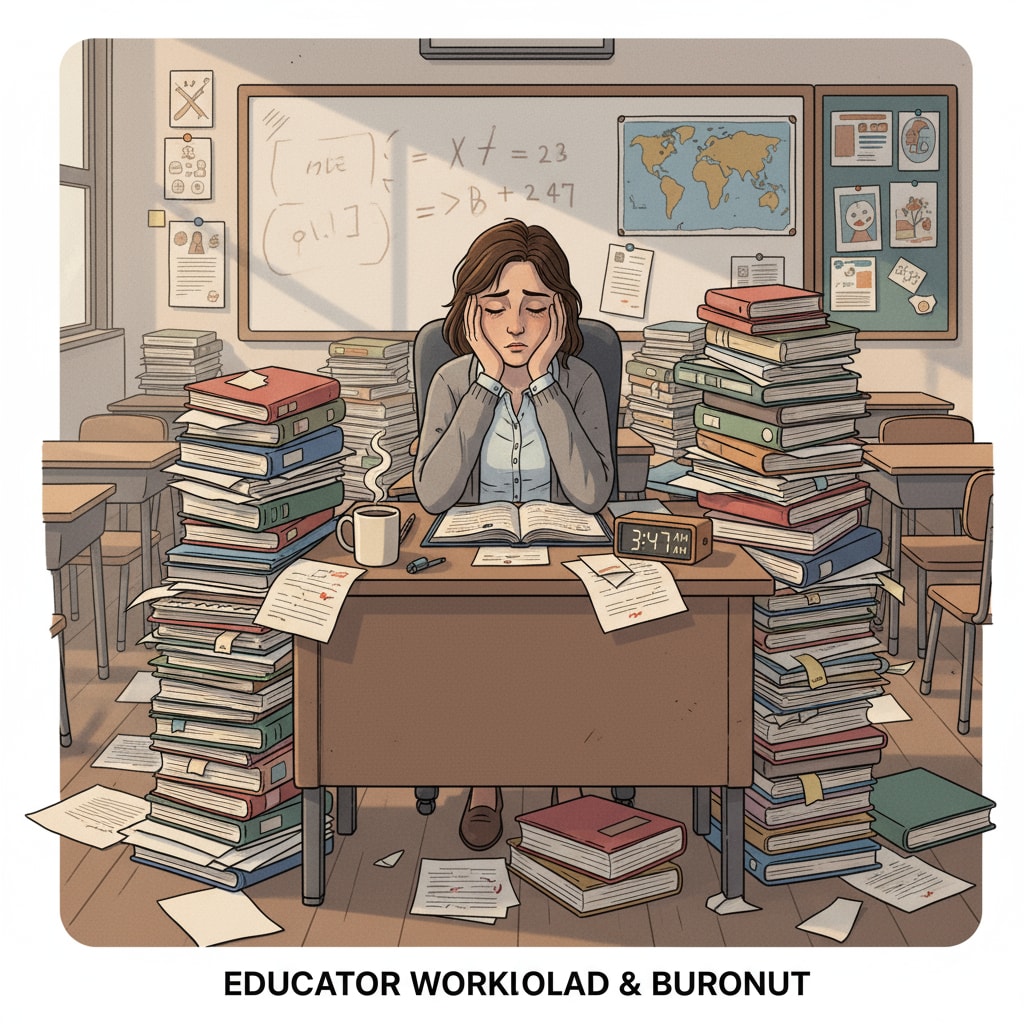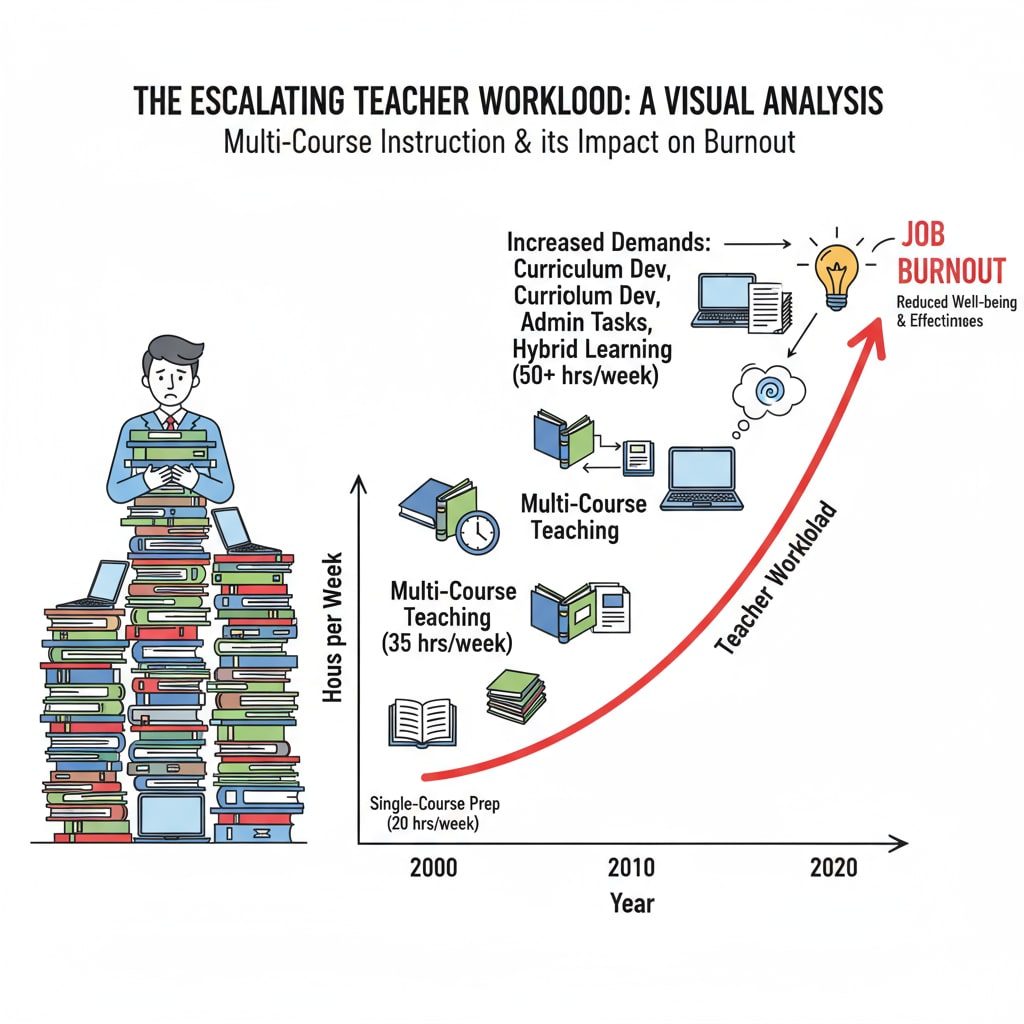In the realm of K12 education, teacher workload, multi-course teaching, and job burnout have become pressing issues that demand our attention. Teachers are the backbone of the education system, yet they often find themselves struggling under an overwhelming workload, which in turn leads to burnout. This not only affects their personal well-being but also has a profound impact on the quality of education they provide.

The Heavy Burden of Workload
Teachers in the K12 system are frequently faced with an excessive workload. They are responsible for teaching multiple courses, each with its own set of curriculum requirements, lesson planning, and assessment tasks. For example, a middle school teacher might be required to teach math, science, and English, all while preparing individualized lessons for students with different learning abilities. This means spending countless hours outside of class planning, grading, and providing extra support. According to National Center for Education Statistics, many teachers report working well over 40 hours a week, often into the evenings and on weekends. This heavy workload can lead to physical and mental fatigue, making it difficult for teachers to maintain their enthusiasm for teaching.

The Impact of Multi-Course Teaching
Multi-course teaching further compounds the problem. When teachers are assigned to teach multiple subjects, they must not only master the content of each course but also adapt their teaching methods to suit the different learning styles required for each subject. This requires a great deal of flexibility and expertise. For instance, teaching art requires a different approach compared to teaching history. Teachers may find themselves constantly switching gears, which can be mentally exhausting. Moreover, multi-course teaching leaves less time for teachers to develop in-depth relationships with their students, as they are spread thin across multiple classes. As a result, students may not receive the individualized attention they need, and teachers may feel a sense of dissatisfaction with their ability to make a meaningful impact.
The cumulative effect of these factors is job burnout. Burnout is a state of emotional, physical, and mental exhaustion caused by prolonged stress. Teachers experiencing burnout may feel disengaged from their work, lack motivation, and even question their career choice. This is a serious concern as it can lead to high turnover rates in the teaching profession, depriving schools of experienced educators. To address this issue, it is crucial to recognize the root causes of teacher workload and burnout and take proactive steps to alleviate the situation. One possible solution is to streamline the curriculum, reducing the number of courses teachers are required to teach. This would allow them to focus more deeply on a fewer subjects and provide higher-quality instruction. Additionally, schools could provide more support staff, such as teaching assistants, to help with administrative tasks and grading. By taking these steps, we can help teachers regain their passion for teaching and ensure the long-term success of our education system. National Education Association on Teacher Burnout
Readability guidance: Using short paragraphs and lists helps summarize key points. Each H2 section should aim to have a list where possible. Keep the passive voice and long sentence ratios in check. Incorporate transition words like however, therefore, in addition, for example, and as a result throughout the text.


